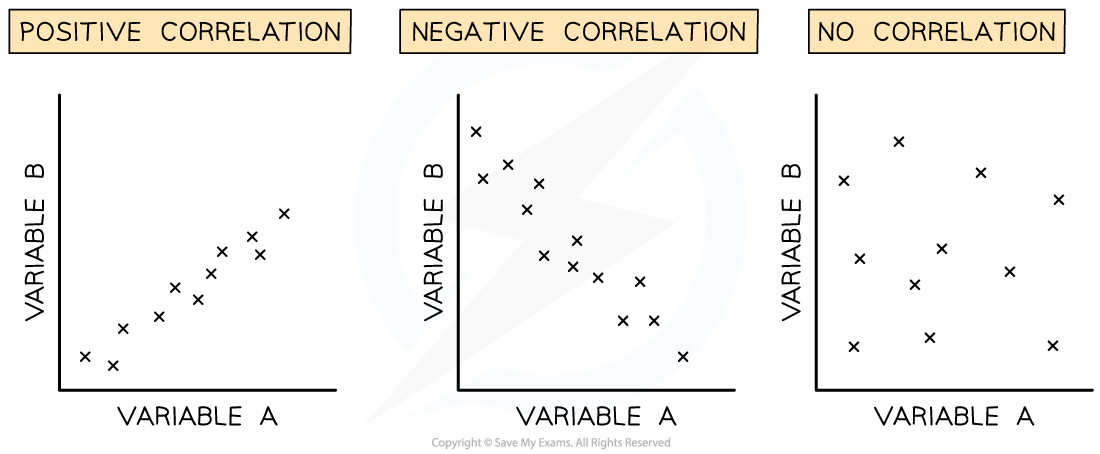- 翰林提供学术活动、国际课程、科研项目一站式留学背景提升服务!
- 400 888 0080
AQA A Level Biology复习笔记3.5.9 Correlations & Causal Relationships - The Heart
Correlations & Causal Relationships - The Heart
- Correlation is an association or relationship between variables
- Causation occurs when one variable has an influence or is influenced by, another
- There is a clear distinction between correlation and causation: a correlation does not necessarily imply a causative relationship
Recognising Correlations and Causal Relationships
- Scientists present their findings from experiments in graphical and numerical forms to identify if there are relationships between risk factors and certain disease
- Scatter diagrams are used to identify correlations between two variables to determine if a factor (such as obesity) does increase the risk of developing a disease (such as type 2 diabetes)
- Correlation can be positive or negative
- Positive correlation: as variable A increases, variable B increases
- Negative correlation: as variable A increases, variable B decreases
- If there is no correlation between variables the correlation coefficient will be 0

Image showing different types of correlation in scatter graphs
Risk factors & causal relationships for coronary heart diseases
- Coronary heart disease (CHD) includes any condition that interferes with the coronary arteries which supply blood to the heart muscle
- Many factors can increase the risk of developing CHD. Some factors are controllable while some factors can not be controlled
- The main risk factors for CHD include:
- Genetic factors, age and sex, high blood pressure, smoking, obesity and high concentrations of low-density lipoproteins (LDLs)
- All of the risk factors for CHD can interact and affect one another
- The causal relationship for some risk factors can be very clear
- A diet high in LDLs will cause the lumens of blood vessels to narrow and the increase the likelihood of an atheroma developing in the coronary arteries
- The interaction between risk factors in studies and investigations can make it hard to determine some causal relationships
- For example, it would seem illogical that an overweight smoker would not suffer from CHD but that overweight, non-smoker would
- The latter individual could have a strong genetic predisposition to CHD (that wasn’t picked up in the study) which when combined with high blood pressure from being overweight results in CHD
- Therefore, it is very important when evaluating data on risk factors that you state that a factor increases or descreases the risk or that there is a correlation between a factor and an outcome but that this one factor is not necessarily the (only) cause
转载自savemyexams

早鸟钜惠!翰林2025暑期班课上线

最新发布
© 2025. All Rights Reserved. 沪ICP备2023009024号-1








